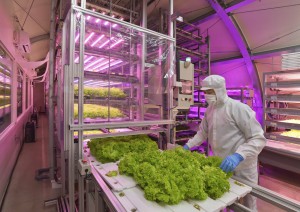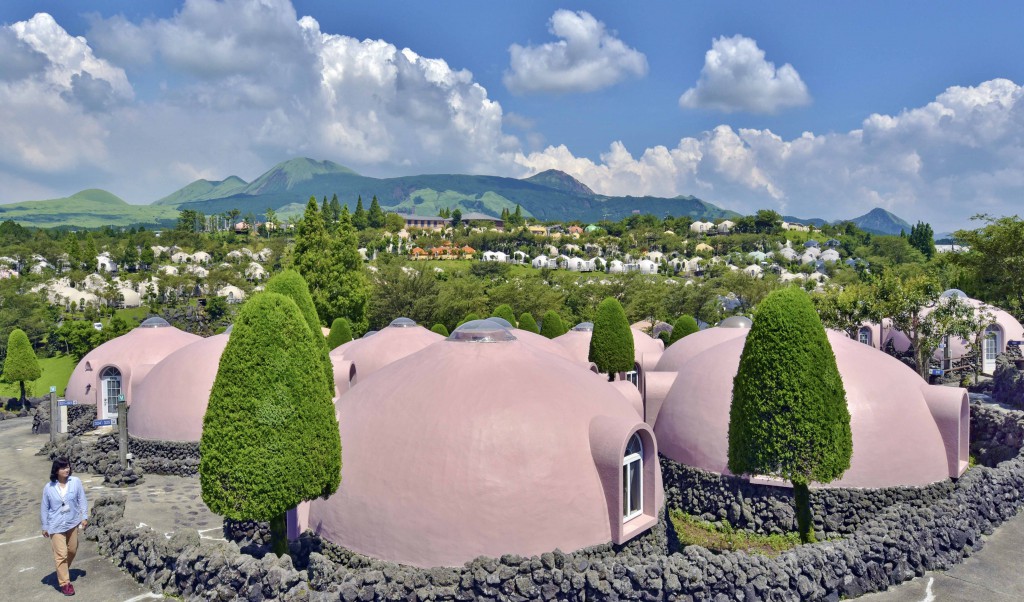
Dome-shaped guesthouses in Aso Farmland. They are coated with special material for the protection against ultraviolet rays and rain. (in Minamiaso Village, Kumamoto Prefecture)
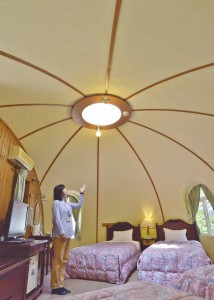
A 45-square-meter dome hut made of polyurethane foam is very well insulated and requires only one air conditioner for 10 square meters. (in Minamiaso Village, Kumamoto Prefecture)
A dome house made of polyurethane foam is drawing attention for its superior durability and thermal insulating properties. They are already put to use as guesthouses and, recently, as agricultural facilities. In April this year, the dome-shaped guesthouses near the epicenter of the Kumamoto Earthquake were confirmed undamaged and became the proof of their high natural disaster resistance.
The dome house was developed by Japan Dome House Co., Ltd., a company based in Kaga-shi, Ishikawa Prefecture. The company has begun supplying the dome houses for agricultural use in 2015 as well. Katsuyuki Kitagawa, president of the firm, used to own a traditional Japanese confectionery maker. In 1998, he began developing the dome house, thinking that he wants to live in a cozy house shaped like a manju dumpling, which is his product at that time. Six years later, his dream came true.
In April 2016, 450 dome-shaped guesthouses at Aso Farmland in Minamiaso Village, Kumamoto Prefecture, withstood the earthquake of the maximum seismic intensity of 6 upper. Later, they have become evacuation for approximately 700 earthquake victims in total so far upon the request from the Minamiaso Municipal Government.
Each standard dome house measures approximately 7 meters in diameter and accomodates rooms of approximately 45 square meters in total. It’s made of a special kind of strong polyurethane foam with threefold density. Thanks to the round shape, it requires no pillar. However, it still is safe and free from risk of roof or wall collapses.
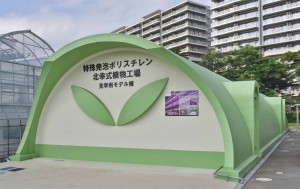
Agricultural dome house can be of variable length to meet different needs. (in Kashiwa-shi, Chiba Prefecture)
The sales of the dome house as agricultural facilities began in 2015. It took 8 years for the company to develop standard dome pieces which can be combined and assembled very easily into a building of any required length to meet the needs of each farmer. A purchaser can also choose a roof piece with windows or that with no window, so it’s suitable for producers of mushrooms which require temperature and humidity control or of other vegetables which are to be grown under artificial light such as LED light.
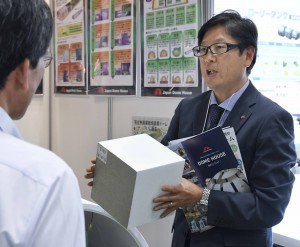
Sales General Manager of Japan Dome House explaining advantages of polyurethane foam houses at trade show for greenhouse horticulture and plant factory operators. (in Koto-ku, Tokyo)
The dome house company is now seeking to expand the use of its products globally in the eastern part of Russia, the Middle East, and other areas of harsh climate. It has received visits of officials from African countries seeking for the possibility of the use as shelters for refugees from civil wars, as well. The manju-shaped houses are expected to have a wide range of application possibilities.


